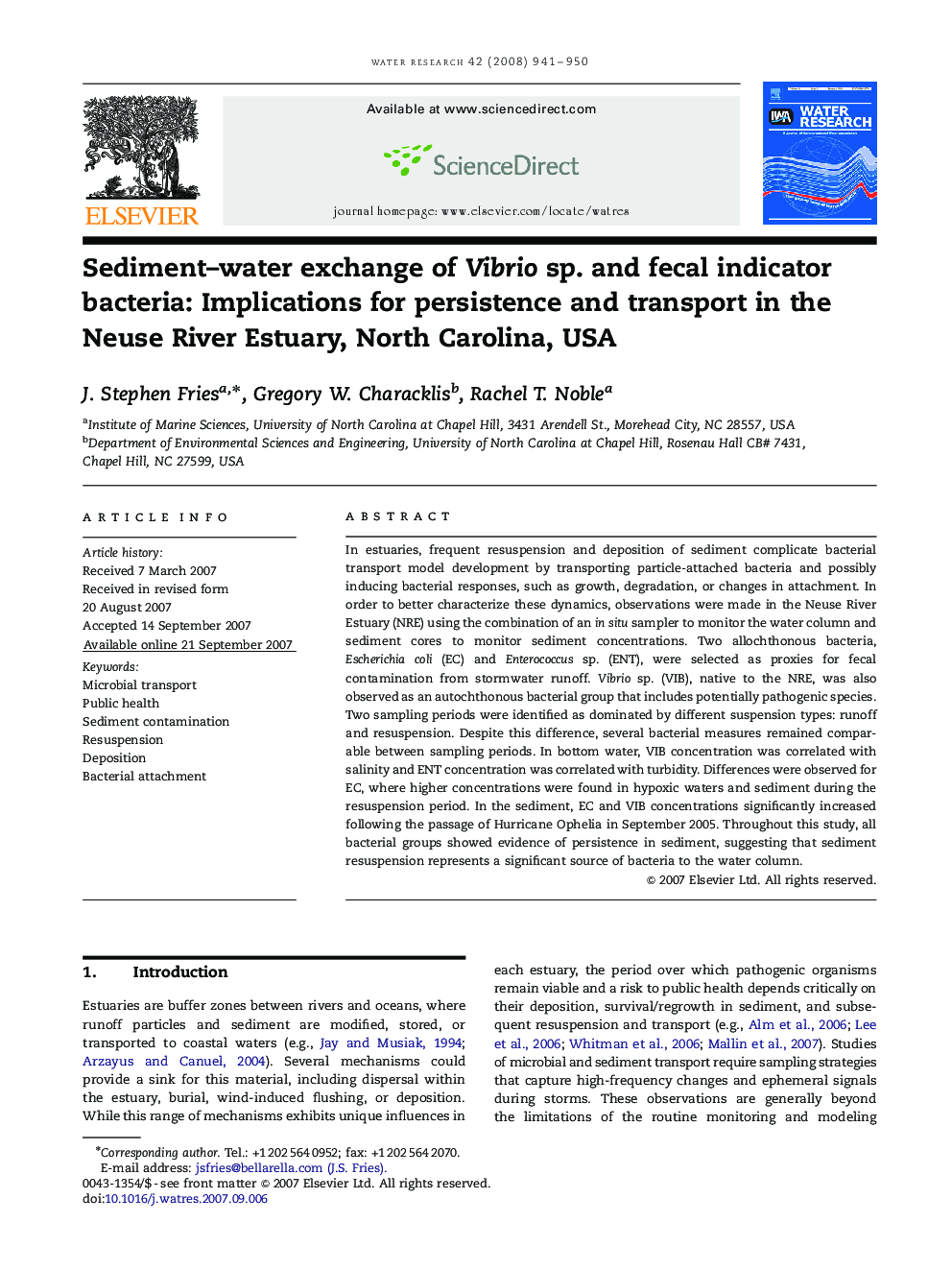| Article ID | Journal | Published Year | Pages | File Type |
|---|---|---|---|---|
| 4483725 | Water Research | 2008 | 10 Pages |
In estuaries, frequent resuspension and deposition of sediment complicate bacterial transport model development by transporting particle-attached bacteria and possibly inducing bacterial responses, such as growth, degradation, or changes in attachment. In order to better characterize these dynamics, observations were made in the Neuse River Estuary (NRE) using the combination of an in situ sampler to monitor the water column and sediment cores to monitor sediment concentrations. Two allochthonous bacteria, Escherichia coli (EC) and Enterococcus sp. (ENT), were selected as proxies for fecal contamination from stormwater runoff. Vibrio sp. (VIB), native to the NRE, was also observed as an autochthonous bacterial group that includes potentially pathogenic species. Two sampling periods were identified as dominated by different suspension types: runoff and resuspension. Despite this difference, several bacterial measures remained comparable between sampling periods. In bottom water, VIB concentration was correlated with salinity and ENT concentration was correlated with turbidity. Differences were observed for EC, where higher concentrations were found in hypoxic waters and sediment during the resuspension period. In the sediment, EC and VIB concentrations significantly increased following the passage of Hurricane Ophelia in September 2005. Throughout this study, all bacterial groups showed evidence of persistence in sediment, suggesting that sediment resuspension represents a significant source of bacteria to the water column.
